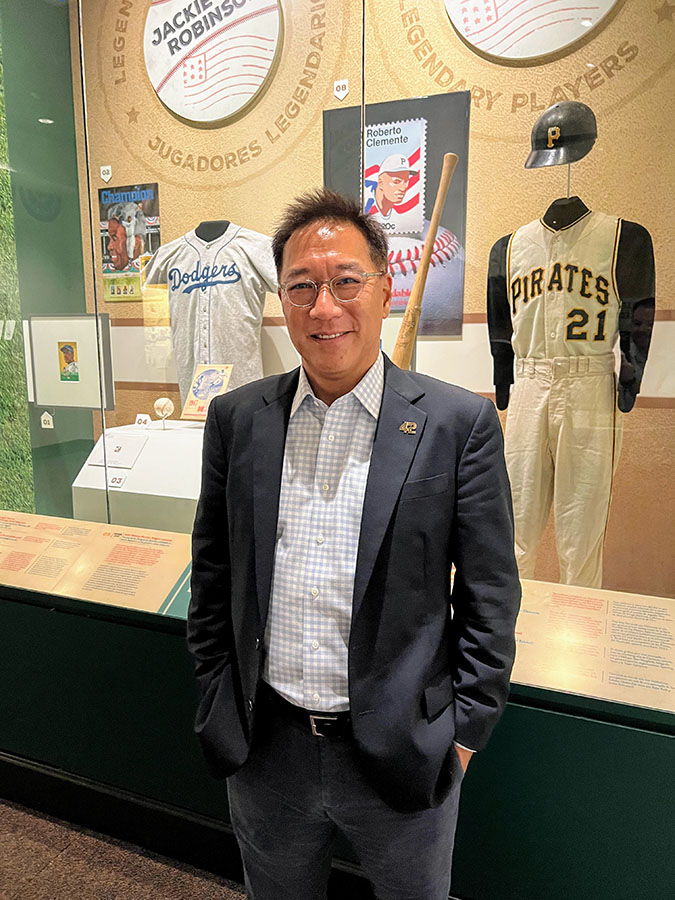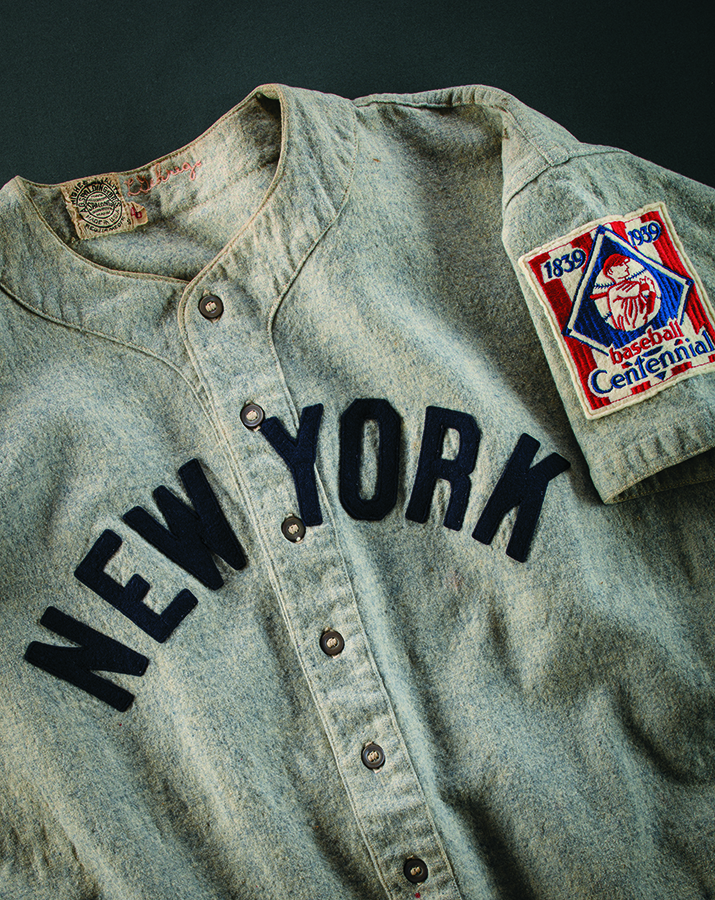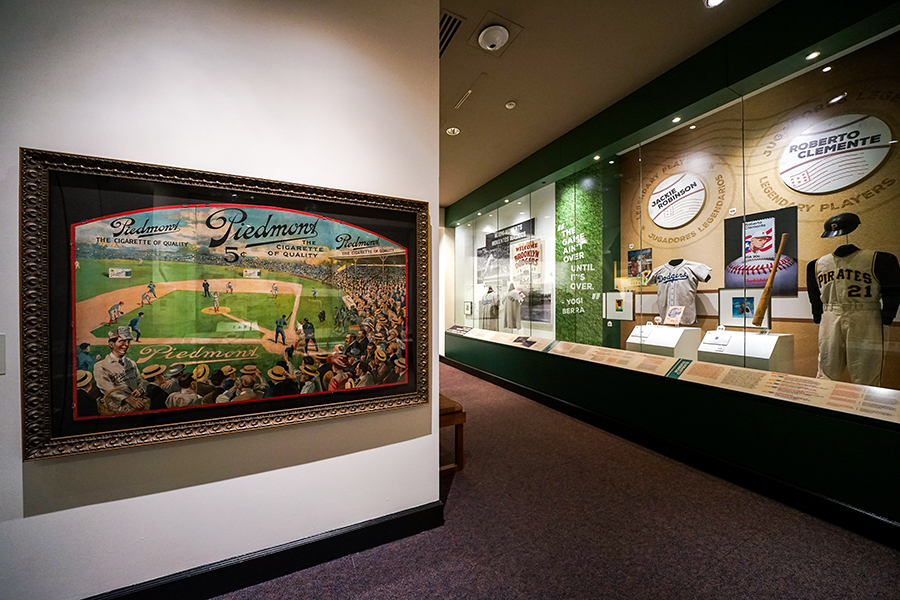THE NATIONAL POSTAL MUSEUM HITS A HOME RUN WITH MEMORABILIA ON LOAN FROM BASEBALL HISTORIAN STEPHEN WONG
By Tommy Noel
Enlarge

A trip to our Nation’s Capital wouldn’t be complete without visiting one, some or all of the 11 Smithsonian museums on the National Mall. But one Smithsonian museum is a little off the beaten path – or out in right field, you might say. Blocks away from the Mall sits the National Postal Museum, which currently holds a massive display of baseball memorabilia, some of it loaned to the museum by baseball historian, collector and Heritage Auctions client Stephen Wong.
Wong doesn’t have a favorite team; he loves them all. And he collects everything from game-worn uniforms and game-used bats to vintage photos, advertisements and, of course, baseball cards. “When I collect, there really are no boundaries,” he says during a tour of the museum. “I’m what they call a universal collector.”
So how did a museum that focuses on stamps and mail delivery get involved with an exhibition about baseball? To start, the land where the National Postal Museum sits was once the location of Washington, D.C’s first baseball field – Swampoodle Grounds. Spectators could see the Capitol building from their seats. The exhibition, titled Baseball: America’s Home Run and sponsored in part by Heritage Auctions, came about to shine a light on stamps and artwork related to the game.
“The Postal Museum has the most extraordinary collection of original artwork that was used to make the stamps of very famous baseball players, ballparks, as well as events that commemorate baseball history,” Wong says.
Enlarge

Enlarge

Among the highlights of the exhibition is a case holding a Lou Gehrig 25 cent stamp surrounded by a Gehrig game-used bat, uniform and World Series program from 1939. A few steps from the Gehrig memorabilia sits Ty Cobb’s game-used bat from 1910-1915. Along with the ball marks, cleat marks and tape left on the bat is a substance Wong identifies as tobacco juice. “Cobb would intimidate the pitcher by spitting tobacco juice on his bat,” he says, “and the black substance still remains.”
Near the Cobb display is Joe DiMaggio’s contract for the 1941 season, the year he recorded at least one hit in 56 consecutive games. The contract promised the New York Yankees center fielder a salary of $37,500 – about three-quarters of a million dollars in today’s money. There is also Jackie Robinson’s road jersey from 1948. “You can imagine what Jackie Robinson was going through,” Wong says as he points out the jersey, “the racial taunts, the pressures, the massive amounts of hatred he had to absorb. He wore that on the road, at other ballparks, where he wasn’t fully embraced and beloved as he was at Ebbets Field.”
Enlarge

When asked about his favorite item in the exhibition, Wong doesn’t name a jersey, bat or even a baseball card. Instead he points to a hot dog vending basket from the 1930s and ’40s. “The usher would be walking through the aisle of Yankee Stadium [with one of these baskets] during the era of Joe DiMaggio, Lou Gehrig and Charles Ruffing,” he muses.
Wong resides in Hong Kong, but he got interested in baseball while living in California as a child. He started collecting baseball cards around age 9 and later expanded his reach to include other memorabilia and ephemera. But he wasn’t satisfied with just collecting memorabilia. He wanted to know the history of every piece he owned. Starting in high school, Wong would spend hours at the library researching the players and their associated artifacts.
“Curiosity is what really prompted me to learn more and forge a connection with the objects I’d been collecting, with the players and the events I had been reading about in these books,” he says.
As Wong sees it, it’s an honor to own and preserve these artifacts from America’s pastime. “I’ve always felt a deep passion, and almost duty, to share these objects with the public,” he says. “It’s extremely important to me to share not only the history of the game, but to educate people, because baseball is one of those topics that is so interwoven with the beauty of this country, as well as its history and overall evolution.”
Baseball: America’s Home Run will remain open through January 2025 at the Smithsonian National Postal Museum in Washington, D.C.
TOMMY NOEL is a Video Production Specialist at Heritage Auctions.

